Анонс:
Цель:
Ознакомить практикующих врачей с диагностикой и лечением эозинофильного эзофагита.
Основные положения.
Эозинофильный эзофагит (ЭоЭ) — это хроническое иммуноопосредованное заболевание пищевода, характеризующееся симптомами эзофагеальной дисфункции и выраженной эозинофильной инфильтрацией слизистой оболочки органа.
Диагностика ЭоЭ основывается на
- · данных клинической картины заболевания (дисфагия, эпизоды вклинения пищи в пищевод, боль в грудной клетке без связи с глотанием), а также
- · на совокупности эндоскопических и гистологических признаков.
Критерием установления диагноза служит эозинофильная инфильтрация слизистой оболочки пищевода с плотностью эозинофилов ≥ 15 в поле зрения микроскопа при большом увеличении (×400) по крайней мере в одном из биоптатов (около 60 эозинофилов в мм2).
Вспомогательное значение для диагноза имеют:
- · исследование общего IgE,
- · эозинофилия периферической крови,
- · результаты кожных аллергопроб
Для лечения ЭоЭ используется несколько подходов, включающих применение
- · ингибиторов протонной помпы (ИПП),
- · топических глюкокортикостероидов (ГКС), а также
- · элиминационные диеты.
Выбор терапии должен быть индивидуализированным, с обязательной оценкой эффективности инициального курса через 6–12 недель при эзофагогастродуоденоскопии с забором биоптатов.
Эндоскопическая дилатация должна рассматриваться у пациентов, страдающих выраженной дисфагией на фоне сужения пищевода.
Заключение.
Рост заболеваемости ЭоЭ в сочетании с преимущественным поражением детей и лиц молодого возраста, хроническое течение заболевания с необходимостью длительной поддерживающей терапии делают ЭоЭ значимой проблемой гастроэнтерологической практики.
Список литературы:
Литература / References
1. Трухманов А.С., Ивашкина Н.Ю. Эозинофильный эзофагит. В кн. Ивашкин В.Т. (ред.) Рациональная фармакотерапия заболеваний органов пищеварения. 2-е изд.
М.: Литерра, 2011. С. 267–9 [Trukhmanov A.S., Ivashkina N.Yu. Eosinophilic esophagitis. In: Ivashkin V.T.
(ed.) Rational pharmacotherapy of digestive system diseases. 2nd ed. Moscow: Literra, 2011. P. 267–9 (In Rus.)].
2. Ивашкин В.Т., Баранская Е.К., Кайбышева В.О.,
Иванова Е.В. и др. Эозинофильный эзофагит: обзор
литературы и описание собственного наблюдения. Рос
журн гастроэнт гепатол колопроктол. 2012;22(1):71–81
[Ivashkin V.T., Baranskaya E.K., Kaibysheva V.O.,
Ivanova E.V. et al. Eosinophilic esophagitis: A literature
review and the description of the authors’ experience. Russian Journal of Gastroenterology, Hepatology, Coloproctology. 2012;22(1):71–81 (In Rus.)].
3. Lucendo A.J., Molina-Infante J., Arias Á. et al. Guidelines on eosinophilic esophagitis: evidence-based statements and recommendations for diagnosis and management
in children and adults. United European Gastroenterol J.
2017;5(3):335–58. DOI: 10.1177/2050640616689525
4. Dellon E.S., Gonsalves N., Hirano I. et al. ACG clinical
guideline: evidenced based approach to the diagnosis and
management of esophageal eosinophilia and eosinophilic
esophagitis. Am J Gastroenterol. 2013;108:679–92.
5. Cianferoni A., Spergel J.M., Muir A. Recent advances in
the pathological understanding of eosinophilic esophagitis.
Expert Rev Gastroenterol Hepatol. 2015;9(12):1501–10.
DOI: 10.1586/17474124.2015.1094372
6. Hill D.A., Spergel J.M. The Immunologic Mechanisms
of Eosinophilic Esophagitis. Curr Allergy Asthma Rep.
2016;16(2):9. DOI: 10.1007/s11882-015-0592-3
7. Spergel J.M. New genetic links in eosinophilic esophagitis. Genome Med. 2010;2(9):60.
8. Dellon E.S., Hirano I. Epidemiology and Natural History of Eosinophilic Esophagitis. Gastroenterology.
2018;154(2):319–32.e3. DOI: 10.1053/j.gastro.2017.06.067
9. Параскевова А.В., Шелковникова И.И., Лапина Т.Л.,
Трухманов А.С. и др. Пациент 68 лет и пациентка
52 лет с эозинофильной инфильтрацией пищевода. Рос
журн гастроэнт гепатол колопроктол 2017;27(4):62–74
[Paraskevova A.V., Shelkovnikova I.I., Lapina T.L.,
Trukhmanov A.S. et al. Two cases of eosinophilic infiltration of the esophagus: 68 year-old male and 52 year-old
female patients. Ross z gastroenterol gepatol koloproktol.
2017;27(4):62–74 (In Rus.)]. DOI: 10.22416/1382-4376-
2017-27-4-62-74
10. Dellon E.S. Epidemiology of eosinophilic esophagitis.
Gastroenterol Clin North Am. 2014;43:201–18.
11. Prasad G.A., Alexander J.A., Schleck C.D. et al. Epidemiology of eosinophilic esophagitis over three decades in
Olmsted County, Minnesota. Clin Gastroenterol Hepatol.
2009;7:1055–61.
12. Kapel R.C., Miller J.K., Torres C. et al. Eosinophilic esophagitis: a prevalent disease in the United States that affects all age groups. Gastroenterology. 2008;134:1316–21.
13. Castro Jimenez A., Gomez Torrijos E., Garcia Rodriguez R. et al. Demographic, clinical and allergological
characteristics of Eosinophilic Esophagitis in a Spanish central region. Allergol Immunopathol (Madr).
2014;42:407–14.
14. van Rhijn B.D., Verheij J., Smout A.J. et al. Rapidly
increasing incidence of eosinophilic esophagitis in a large
cohort. Neurogastroenterol Motil. 2013;25:47–52.
15. Arias A., Perez-Martinez I., Tenias J.M. et al. Systematic review with meta-analysis: the incidence and prevalence of eosinophilic oesophagitis in children and adults
in population-based studies. Aliment Pharmacol Ther.
2016;43:3–15.
16. González-Cervera J., Arias Á., Redondo-González O.
et al. Association between atopic manifestations and eosinophilic esophagitis: a systematic review and meta-analysis.
Ann Allergy Asth Immunol. 2017;118(5):582–90.e2. DOI:
10.1016/j.anai.2017.02.006
17. Remedios M., Campbell C., Jones D.M. et al. Eosinophilic esophagitis in adults: clinical, endoscopic, histologic
findings, and response to treatment with fluticasone propionate. Gastrointest Endosc. 2006;63:3–12.
18. Croese J., Fairley S.K., Masson J.W. et al. Clinical and
endoscopic features of eosinophilic esophagitis in adults.
Gastrointest Endosc. 2003;58:516–22.
19. Spergel J.M., Brown-Whitehorn T.F., Beausoleil J.L.
et al. 14 years of eosinophilic esophagitis: clinical features and prognosis. J Pediatr Gastroenterol Nutr.
2009;48:30–6.
20. Dellon E.S., Speck O., Woodward K. et al. Distribution
and variability of esophageal eosinophilia in patients undergoing upper endoscopy. Mod Pathol. 2015;28:383–90.
21. Fiocca R., Mastracci L., Engström C. et al. Long-term
outcome of microscopic esophagitis in chronic GERD patients treated with esomeprazole or laparoscopic antireflux surgery in the LOTUS trial. Am J Gastroenterol.
2010;105:1015–23.
22. Dellon E.S., Liacouras C.A., Molina-Infante J., Furuta G.T. et al. Updated International Consensus Diagnostic
Criteria for Eosinophilic Esophagitis: Proceedings of the
AGREE Conference. Gastroenterology. 2018;155(4):1022–
33.e10. DOI: 10.1053/j.gastro.2018.07.009
23. Lucendo A.J., Arias A., Tenias J.M. Relation between
eosinophilic esophagitis and oral immunotherapy for food
allergy: a systematic review with meta-analysis. Ann
Allergy Asthma Immunol. 2014;113(6):624–9. DOI:
10.1016/j.anai.2014.08.004
24. Schlag C., Miehlke S., Heiseke A., Brockow K. et
al. Peripheral blood eosinophils and other non-invasive biomarkers can monitor treatment response in eosinophilic oesophagitis. Aliment Pharmacol Ther. 2015
Nov;42(9):1122–30. DOI: 10.1111/apt.13386
25. Hines B.T., Rank M.A., Wright B.L., Marks L.A.
et al. Minimally invasive biomarker studies in eosinophilic esophagitis: A systematic review. Ann Allergy Asthma Immunol. 2018;121(2):218–28. DOI:
10.1016/j.anai.2018.05.005
26. Pelz B.J., Wechsler J.B, Amsden K., Johnson К. et al.
IgE-associated food allergy alters the presentation of
pediatric eosinophilic esophagitis. Clin Exp Allergy.
2016;46(11):1431–40.
27. Hirano I., Moy N., Heckman M.G. et al. Endoscopic
assessment of the oesophageal features of eosinophilic oesophagitis: validation of a novel classification and grading
system. Gut. 2013;62:489–95.
28. Kim H.P., Vance R.B., Shaheen N.J. et al. The prevalence and diagnostic utility of endoscopic features of eosinophilic esophagitis: a meta-analysis. Clin Gastroenterol
Hepatol. 2012;10:988–96.
29. Hirano I. Role of advanced diagnostics for eosinophilic
esophagitis. Dig Dis. 2014;32(1–2):78–83.
30. Liacouras C.A., Spergel J.M., Ruchelli E. et al. Eosinophilic esophagitis: A 10-year experience in 381 children.
Clin Gastroenterol Hepatol. 2005;3:1198–206.
31. Saffari H., Peterson K.A., Fang J.C. et al. Patchy eosinophil distributions in an esophagectomy specimen from
a patient with eosinophilic esophagitis: Implications for endoscopic biopsy. J Allergy Clin Immunol. 2012;130:798–
800.
32. Nielsen J.A., Lager D.J., Lewin M. et al. The optimal
number of biopsy fragments to establish a morphologic diagnosis of eosinophilic esophagitis. Am J Gastroenterol.
2014;109:515–20.
33. Salek J., Clayton F., Vinson L. et al. Endoscopic appearance and location dictate diagnostic yield of biopsies
in eosinophilic oesophagitis. Aliment Pharmacol Ther.
2015;41:1288–95.
34. Dellon E.S., Speck O., Woodward K. et al. Distribution
and variability of esophageal eosinophilia in patients undergoing upper endoscopy. Mod Pathol. 2015;28:383–90.
35. Kim H.P., Dellon E.S. An Evolving Approach to the Diagnosis of Eosinophilic Esophagitis. Gastroenterol Hepatol
(N Y). 2018 Jun;14(6):358–66. 36. Saffari H., Hoffman L.H., Peterson K.A. et al. Electron
microscopy elucidates eosinophil degranulation patterns in
patients with eosinophilic esophagitis. J Allergy Clin Immunol. 2014;133:1728–34.
37. Capocelli K.E., Fernando S.D., Menard-Katcher C.
et al. Ultrastructural features of eosinophilic oesophagitis: impact of treatment on desmosomes. J Clin Pathol.
2015;68:51–6.
38. Collins M.H. Histopathologic features of eosinophilic esophagitis and eosinophilic gastrointestinal diseases. Gastroenterol Clin North Am. 2014;43:257–68.
39. Anyane-Yeboa A., Wang W., Kavitt R.T. The Role of
Allergy Testing in Eosinophilic Esophagitis. Gastroenterol
Hepatol (N Y). 2018 Aug;14(8):463–9.
40. Syed A., Maradey-Romero C., Fass R. The relationship
between eosinophilic esophagitis and esophageal cancer.
Dis Esophagus. 2017;30(7):1–5. DOI: 10.1093/dote/
dox050
41. Lucendo A.J., Arias A., Molina-Infante J. Efficacy of
proton pump inhibitor drugs for inducing clinical and histologic remission in patients with symptomatic esophageal
eosinophilia: a systematic review and meta-analysis. Clin
Gastroenterol Hepatol. 2016;14:13–22.
42. Molina-Infante J., Ferrando-Lamana L., Ripoll C. et al.
Esophageal eosinophilic infiltration responds to proton
pump inhibition in most adults. Clin Gastroenterol Hepatol. 2011;9:110–7.
43. Liacouras C.A., Furuta G.T., Hirano I. et al. Eosinophilic esophagitis: updated consensus recommendations for
children and adults. J Allergy Clin Immunol. 2011;128:3–
20.
44. Gómez-Torrijos E., García-Rodríguez R., CastroJiménez A. et al. The efficacy of step-down therapy in
adult patients with proton pump inhibitor-responsiveoesophageal eosinophilia. Aliment Pharmacol Ther. 2016
Feb;43(4):534–40. DOI: 10.1111/apt.13496
45. Schaefer E.T., Fitzgerald J.F., Molleston J.P. et al.
Comparison of oral prednisone and topical fluticasone in
the treatment of eosinophilic esophagitis: a randomized trial in children. Clin Gastroenterol Hepatol. 2008;6:165–73.
46. Tan N. Di, Xiao Y.L., Chen M.H. Steroids therapy for
eosinophilic esophagitis: Systematic review and meta-analysis. J Dig Dis. 2015;16:431–42.
47. Sawas T., Dhalla S., Sayyar M. et al. Systematic review with meta-analysis: pharmacological interventions
for eosinophilic oesophagitis. Aliment Pharmacol Ther.
2015;41:797–806.
48. Murali A.R., Gupta A., Attar B.M. et al. Topical steroids
in eosinophilic esophagitis: systematic review and metaanalysis of placebo controlled randomized clinical trials.
J Gastroenterol Hepatol. 2015;31:1111–9.
49. Chuang M.-Y.A., Chinnaratha M.A., Hancock D.G.
et al. Topical steroid therapy for the treatment of eosinophilic esophagitis (EoE): a systematic review and metaanalysis. Clin Transl Gastroenterol. 2015;6:e82.
50. Straumann A., Conus S., Degen L. et al. Long-term
budesonide maintenance treatment is partially effective for
patients with eosinophilic esophagitis. Clin Gastroenterol
Hepatol. 2011;9:400–9.
51. Greuter T., Safroneeva E., Bussmann C. et al. Maintenance Treatment Of Eosinophilic Esophagitis With
Swallowed Topical Steroids Alters Disease Course Over
A 5-Year Follow-Up Period In Adult Patients. Clin Gastroenterol Hepatol. 2018:S1542-3565(18)30598-6. DOI:
10.1016/j.cgh.2018.05.045
52. Eluri S., Runge T.M., Hansen J. et al. Diminishing Effectiveness of Long-Term Maintenance Topical Steroid Therapy
in PPI Non-Responsive Eosinophilic Esophagitis. Clin Transl
Gastroenterol. 2017;8(6):e97. DOI: 10.1038/ctg.2017.27
53. Moawad F.J., Cheatham J.G., DeZee K.J. Meta-analysis: the safety and efficacy of dilation in eosinophilic oesophagitis. Aliment Pharmacol Ther. 2013;38:713–20.
54. Kagalwalla A.F., Sentongo T.A., Ritz S. et al. Effect
of six-food elimination diet on clinical and histologic
outcomes in eosinophilic esophagitis. Clin Gastroenterol
Hepatol. 2006;4:1097–102.
55. Arias A., Gonzalez-Cervera J., Tenias J.M. et al. Efficacy
of dietary interventions for inducing histologic remission in
patients with eosinophilic esophagitis: a systematic review
and meta-analysis. Gastroenterology. 2014;146:1639–48.
56. Molina-Infante J., Arias A., Barrio J. et al. Four-food
group elimination diet for adult eosinophilic esophagitis:
A prospective multicenter study. J Allergy Clin Immunol.
2014;134:1093–99.
57. Molina-Infante J., Modolell I., Alcedo J. et al. Step-up
empiric elimination diet for pediatric and adult eosinophilic esophagitis: the 2–4–6 study. United Eur Gastroenterol
J. 2016;(Suppl 5):A126.
58. Gonsalves N., Yang G.-Y., Doerfler B. et al. Elimination
diet effectively treats eosinophilic esophagitis in adults;
food reintroduction identifies causative factors. Gastroenterology. 2012;142:1451–5.
59. Lucendo A.J., Arias A., Gonzalez-Cervera J. et al. Empiric 6-food elimination diet induced and maintained prolonged remission in patients with adult eosinophilic esophagitis: a prospective study on the food cause of the
disease. J Allergy Clin Immunol. 2013;131:797–804.
60. Kagalwalla A.F., Shah A., Li B.U.K. et al. Identification of specific foods responsible for inflammation in children with eosinophilic esophagitis successfully treated with
empiric elimination diet. J Pediatr Gastroenterol Nutr.
2011;53:145–9.
61. Safroneeva E., Straumann A., Coslovsky M. et al. Symptoms have modest accuracy in detecting endoscopic and
histologic remission in adults with eosinophilic esophagitis.
Gastroenterology. 2016;150:581–90.

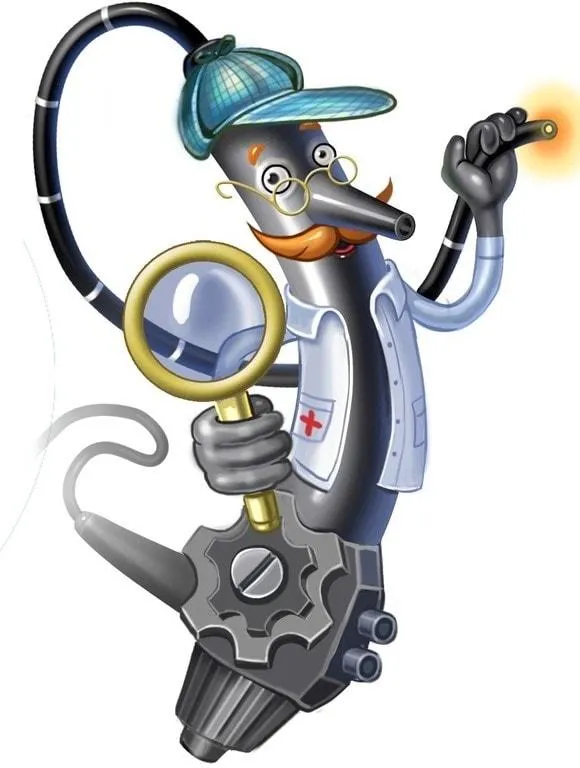 Вам может быть интересно:
Вам может быть интересно:

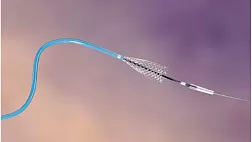



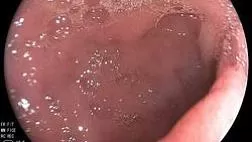
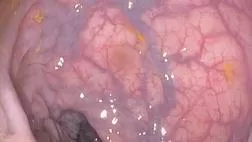
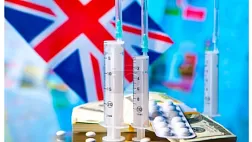


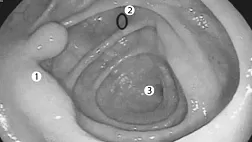


.jpg)

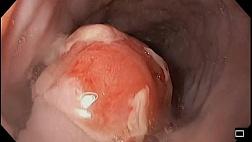
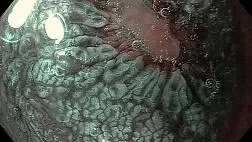
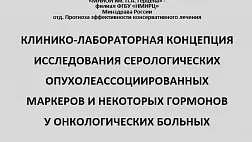
.png)
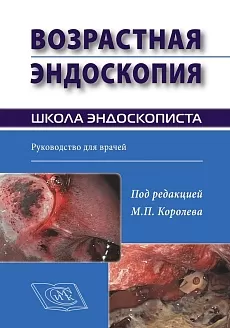
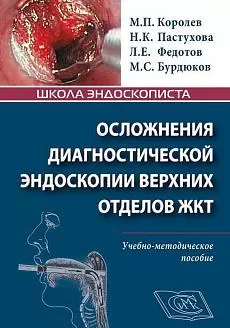

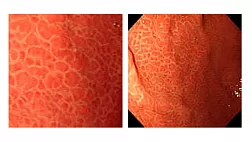
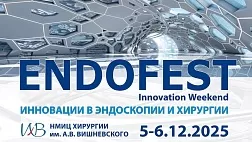












Комментарии